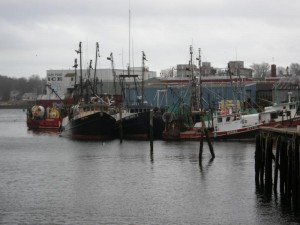September 10, 2015 — The consensus toward developing a plan to distribute the approximately $6 million remaining in federal groundfish disaster aid seems to have degenerated into a contentious melee and now local stakeholders anxiously await the decision by the state Division of Marine Fisheries on which Massachusetts fishermen will qualify for assistance.
“I think we should hear something pretty soon,” Jackie Odell, the executive director of the Northeast Seafood Coalition, said Wednesday. “I wouldn’t be surprised if it’s as soon as the end of this week.”
The process for formulating a distribution plan turned ugly at a two-hour Friday afternoon meeting in New Bedford, according to several people who participated, with different Bay State fishing regions — and fishermen of different species — pitted against each other in their respective efforts to influence DMF’s final spending plan. The meeting had been expected to end with a decision on what plan to forward to DMF.
“When I left that call, I was feeling very frustrated and very upset,” said Gloucester Economic Development Director Sal Di Stefano, who participated via conference call. “It was very unfortunate. We shouldn’t be pitting one fisherman against another. It shouldn’t be Gloucester versus the Cape or the Cape versus New Bedford. That doesn’t move the industry forward at all.”
Read the full story at the Gloucester Daily Times

